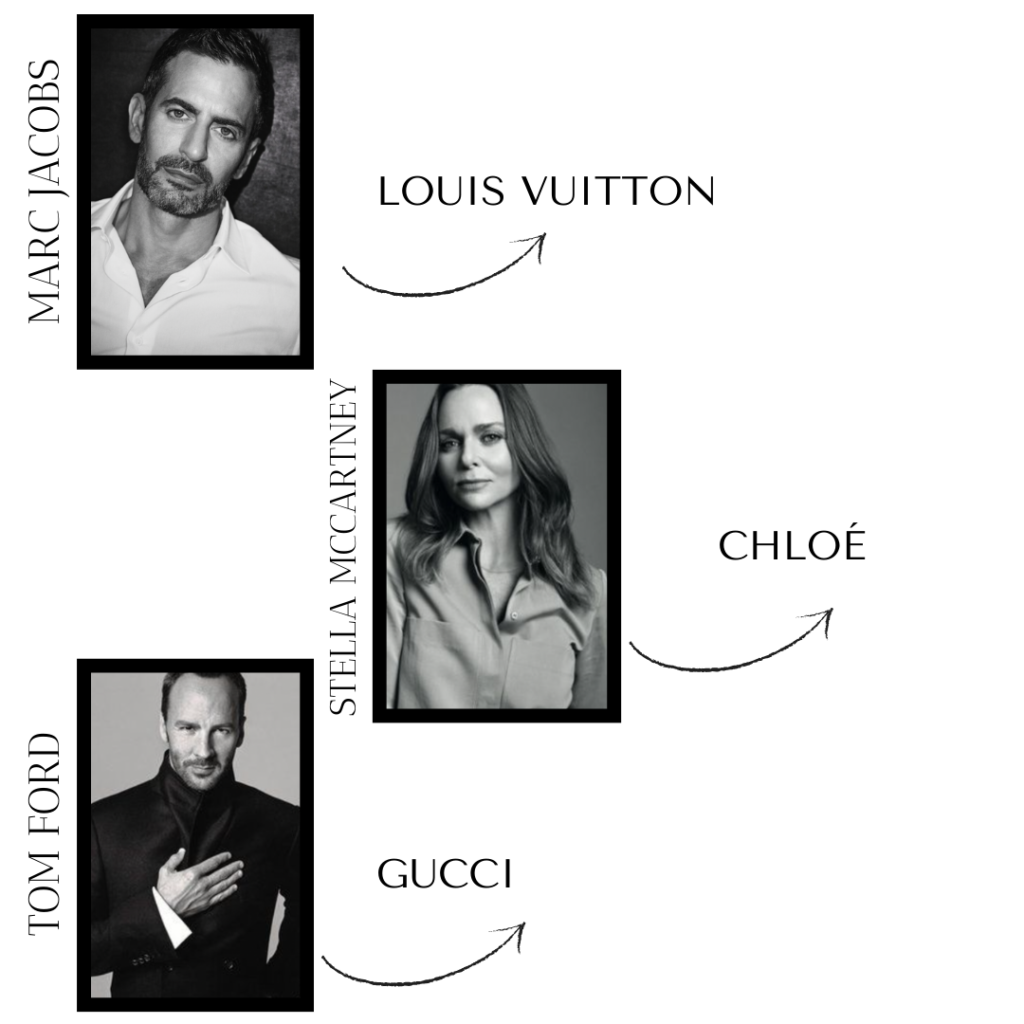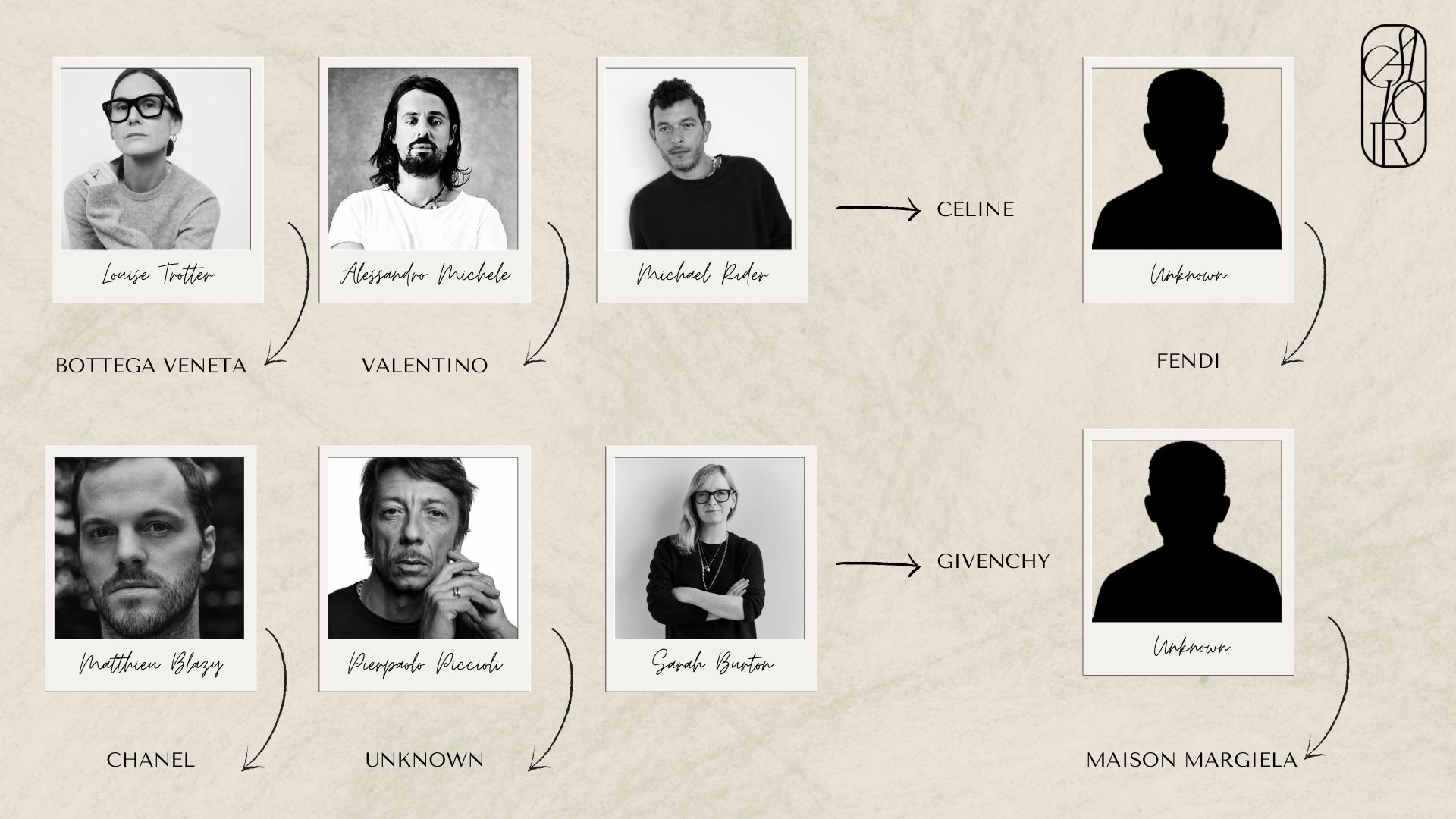The luxury fashion world is undergoing a seismic transformation, with several big name creative directors stepping down or changing roles. These unexpected departures and appointments are changing not only the artistic direction of fashion houses but also their cultural and economic DNA. And these shifts are signaling that 2025 will bring a bold new era to luxury fashion. As fashion houses try to navigate in this period, the influence of creative leadership has never been more pivotal.
But why are we witnessing this wave of changes now, even when fashion houses appear to be thriving? Consider Virginie Viard. Her tenure at Chanel brought an impressive 16% increase in revenue last year, yet she stepped down. Across the board, other designers with successful track records are leaving the prominent maisons. What drives such significant transitions, and what does it mean for the future of luxury fashion? To understand where we’re headed, we must first explore how we got here.
The Legacy of Creative Directors
The very concept of the creative director as we know it today has its roots in haute couture. It can be traced back to Charles Frederick Worth who is often referred to as the father of haute couture. In the late 19th century, Worth moved from London to Paris to established the House of Worth and the “maison” tradition. He was both the creative director and the owner of his maison. Worth changed fashion by bringing artistic intention and personal story to his work, he branded himself as much as the collections he created. He also redefined the designer-client relationship by introducing the first trunk shows in his studio.
His maison was not just a workshop; it was a creative empire. This foundation paved the way for designers and luxury brands. For 80 years after Worth’s time maisons built upon this tradition. Luxury fashion players became entities or conglomerates at the heart of the fashion industry.

Another big step came in the 1990s when the market became more competitive. Conglomerates like LVMH started to introduce bold, visionary creative directors to head up legacy maisons. Marc Jacobs at Louis Vuitton and Stella McCartney at Chloé became the face of this shift. They brought new energy to established brands. Their tenures proved that a creative director could define a brand’s aesthetic and elevate its business. Marc Jacobs was creative director at Louis Vuitton for 16 years and contributed to the growth of the brand. He turned “the luggage maker” into a global fashion giant, introduced LV’s first ready-to-wear collections and collaborated with artistic icons like Takashi Murakami. His designs increased sales and generated buzz around the $3.5 billion Louis Vuitton which is 60% of LVMH’s operating profits. His collaboration with Murakami on the multicolored handbag was a $300 million hit in 2003.
Similarly Stella McCartney’s appointment at Chloé brought a fresh, young perspective to the brand and a new generation of fashion enthusiasts. This cemented the power of a clear creative vision to revitalize and reposition a brand for the contemporary consumer. The brand’s sales doubled after she took over in 1997. Industry sources estimate profits were over $35 million.
The impact of creative directors is clear. They can make a brand legendary or destroy its reputation. A good creative director can take a fashion house to new heights as Tom Ford did at Gucci in the late 1990s. Ford’s “sex sells” motto and his provocative vision not only saved the brand from bankruptcy but turned it into a $10 billion giant. But the flip side is just as telling. Dolce & Gabbana crashed in 2018 due to public scandals and missteps in leadership. They lost significant reputation and financial value. D&G’s mistake in the Chinese market had a lasting impact. Chinese sales revenue dropped to €1 billion. The scandal also wiped out 37.6 billion RMB in 8 days.
And then in the 2020s, came the next evolution with unconventional appointments blurring the lines between high fashion and pop culture. Pharrell Williams at Louis Vuitton menswear was a game changer. He merged streetwear with luxury craftsmanship and made inclusivity and culture relevant.
In the age of social media, metaverse, NFTs and TikTok, maisons are no longer just selling couture – they’re selling culture. As such, today’s creative directors must be fluent not only in design but in the art of storytelling across platforms.
The Creative Shift of 2024: A Power Pivot

If the 1990s and 2020s solidified the creative director’s role as essential to a maison’s success, then 2024 proved just how fragile and dynamic that role has become. Never have we seen so many changes at the top.
It all started in March with Pierpaolo Piccioli leaving Valentino —a move that shocked the industry given his immense success. His replacement, Alessandro Michele who had already led a creative revolution at Gucci, stepped in. By September another wave was hitting: Haider Ackermann was at Tom Ford, Sarah Burton was at Givenchy and Michael Rider was moving from Polo Ralph Lauren to Celine after Hedi Slimane’s dramatic exit.
As the year ended the pace only got faster. Matthieu Blazy left Bottega Veneta for Chanel, John Galliano left Maison Margiela and Louise Trotter stepped in to reboot Bottega Veneta. Even as roles are filled gaps remain at Fendi and Maison Margiela adding to the air of intrigue and speculation in an already chaotic landscape.
High profile names like Hedi Slimane, John Galliano and Pierpaolo Piccioli are still unattached. The challenge is finding people who can balance art with commerce. Will John Galliano turn up at another house? Is Jonathan Anderson eyeing Dior? The questions remain unanswered and the industry is in suspense.
But beyond the headlines creative directors must also create hype, aligning with the house’s DNA and the growing expectations of socially aware consumers. More than ever they are juggling a tightrope between telling a story and meeting the demands of sustainability, inclusivity, and transparency.
Because these changes are a symptom of bigger industry trends: changing consumer habits, shareholder pressure, and the complexity of branding in the digital age. More than ever creative directors are navigating a delicate act, crafting narratives while meeting demands for sustainability, inclusivity, and transparency. In this day and age the success of a maison is no longer just about looks – it’s about connection, purpose and storytelling. These shifts in the heart of luxury industry highlight how deeply interconnected creative leadership and business strategy have become.
Bloom or Fade: The Path Ahead
As we enter 2025, the luxury fashion landscape feels like a garden after a storm – full of opportunity but full of pitfalls. The role of the creative director is like an alchemist – part artist, part strategist and part futurist.
When done right, the pairing between a maison and its leader becomes nothing short of legendary. Karl Lagerfeld at his own brand and Chanel and Fendi showed you can modernize while preserving heritage, while Tom Ford at Gucci proved how a fresh vision can reboot an entire brand.
But not all partnerships are made in couture heaven. In a time of economic shifts and consumer demand for accountability, the stakes are high. Who will rise to the challenge and bloom in their new role? And who will fade under the pressure?
As we look to 2025, one thing is for sure – luxury fashion forever rooted in tradition will continue to flourish through innovation. Some flowers blossom brightly in their new settings, while others may fail to adapt and fade into the background.